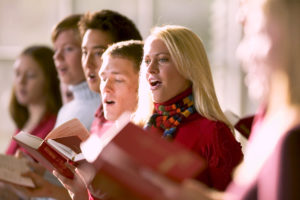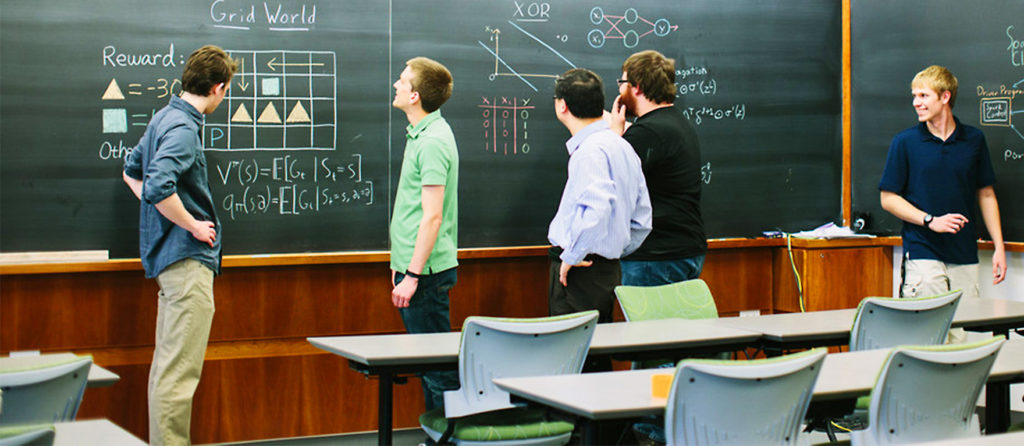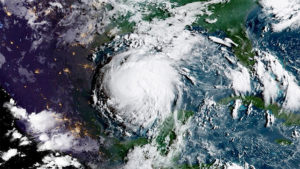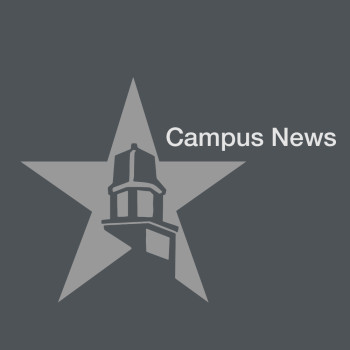Next Tuesday, the Houghton Eco Reps will host an Arts and the Environment Expo. The event will feature food, live music, crafts, and an art competition, according to Sustainability Office Intern Claire Brower ’18. Brower said that the expo will be “a winter and nature themed event with a little Christmas thrown in there.”
The Arts and the Environment Expo was held for the first time in the spring of 2016. The expo provided a way to connect artistic expression to “our relationships with others and the environment,” according to the Houghton website’s promotional page. This year, Brower said that the vision for the expo is the same, but that the event will also boast a seasonal emphasis.
All food at the event will be free and will complement the winter-and-nature theme, according to Eco Reps members Melissa Hodde ‘20 and Ashleigh Dernier ‘18. Dernier said that she is most excited about making owl cupcakes that use Oreo cookies for eyes.
Brower added that the expo will feature live music. She said that the lineup will include Arthur Ward ’18, Andrew Hutton ’18, and Ky’asia Blanchard ‘20. Brower also noted that there will be winter poetry readings during the event.
Everyone attending the expo will also have the opportunity to participate in crafts and express their own artistry. Eco Reps member Bonnie Huegel ’18 said, “We’ll have a table or two devoted to some simple crafts that you can make on the spot. We’ll be making Christmas ornaments and air fresheners, and there will be nature- and winter-themed coloring pages.” She continued, “I’m most excited about one particular craft I found for bird-friendly decorations. They’re ornaments made from pressed birdseed that you can hang outside, so the birds can have their own edible Christmas tree!”
Eco Reps leadership team member Brielle Kwarta ’19 also said, “I think that an arts and crafts activity will be a great de-stressor for many college students during the final days of the semester.” She added, “Many of the crafts can be used as a Christmas present or as a decoration for dorm rooms, common spaces, and the townhouses.” Since the expo is focused on increasing campus consciousness of environmental issues, Kwarta added that many of the crafts will use recycled materials such as “pine cones, scrap ribbon, and unused Popsicle sticks.”
The main focus of the expo is to connect artistic expression environmental involvement. During the event, according to Brower, participants will be able to browse a thematic student-juried art competition. Artworks of various media that follow a winter-nature theme will be displayed for students to browse, and each person is encouraged to vote for the work of art they find most compelling. At the end of the night, gift card prizes will be awarded to the works with the greatest numbers of votes. Dernier said that both art majors and non-art majors are welcome to submit pieces for the art competition. Hodde, who expressed her plans to submit photography to the competition, said “I’m really curious to meet students from the art department who enjoy working with nature as a subject.” She continued, “Since the campus is pretty much in the middle of the woods, it’s intuitive that we would have a lot of nature enthusiasts at Houghton, but there isn’t a centralized way to get together with them outside of Eco Reps and the special interest outdoor clubs.”
The Arts and the Environment Expo will take place in the Van Dyke Lounge on Tuesday, December 5, and will last from 8:00 pm to 10:00 pm. All are welcome to attend.


 Lyme disease is the most common tick-borne disease. “Reported cases of Lyme have tripled in the past few decades,” said epidemiologist Kirsten Kugeler at the Centers for Disease Control (CDC). She continued, “Today, we think that the true burden of Lyme disease in the U.S. is about 300,000 cases each year.” Typical symptoms of Lyme disease are fever, headache, fatigue, and a characteristic skin rash called erythema migrans, according to the CDC. If Lyme disease is caught early, it can be treated with antibiotics to prevent development of more severe symptoms.
Lyme disease is the most common tick-borne disease. “Reported cases of Lyme have tripled in the past few decades,” said epidemiologist Kirsten Kugeler at the Centers for Disease Control (CDC). She continued, “Today, we think that the true burden of Lyme disease in the U.S. is about 300,000 cases each year.” Typical symptoms of Lyme disease are fever, headache, fatigue, and a characteristic skin rash called erythema migrans, according to the CDC. If Lyme disease is caught early, it can be treated with antibiotics to prevent development of more severe symptoms.  This year’s New Vision Week speaker is Mick Veach, who is a pastor at Mosaic Midtown Church in Detroit, Michigan. According to the church’s website, Veach’s commitment to share the love of God has led him to “smuggle Bibles, feed lepers, and work and live amongst a Muslim people group.” Veach will be speaking in chapel on Monday and Wednesday.
This year’s New Vision Week speaker is Mick Veach, who is a pastor at Mosaic Midtown Church in Detroit, Michigan. According to the church’s website, Veach’s commitment to share the love of God has led him to “smuggle Bibles, feed lepers, and work and live amongst a Muslim people group.” Veach will be speaking in chapel on Monday and Wednesday. 
 According to Wolfe, who is the primary organizer of the Arctic Studies program, a total of ten students from Houghton and other Christian colleges are enrolled in the program this semester. All students take four core courses: Ecology of Alaska, Human Ecology, Alaskan Missions, and Wilderness Recreation and Management. These courses help students gain “an appreciation for the different Alaskan cultures, for both historic and current missionary efforts to reach natives, as well as for the numerous recreational aspects of being in the wilderness of Alaska,” said Wolfe. He added that students can add independent studies to their core, and this semester students are studying subjects such as Alaskan flora and the relation of observed moose browsing activity to moose density.
According to Wolfe, who is the primary organizer of the Arctic Studies program, a total of ten students from Houghton and other Christian colleges are enrolled in the program this semester. All students take four core courses: Ecology of Alaska, Human Ecology, Alaskan Missions, and Wilderness Recreation and Management. These courses help students gain “an appreciation for the different Alaskan cultures, for both historic and current missionary efforts to reach natives, as well as for the numerous recreational aspects of being in the wilderness of Alaska,” said Wolfe. He added that students can add independent studies to their core, and this semester students are studying subjects such as Alaskan flora and the relation of observed moose browsing activity to moose density.  As areas hit by Harvey begin the slow process of rebuilding homes and infrastructure, one of the most powerful storms on record, Hurricane Irma, is barreling through the Caribbean and Florida. Analysts from the U.S. Global Change Research Program have partially attributed this unusually active hurricane season to climate change, and while climate scientists are often able to link extreme weather events to human activity, hurricanes are more complex.
As areas hit by Harvey begin the slow process of rebuilding homes and infrastructure, one of the most powerful storms on record, Hurricane Irma, is barreling through the Caribbean and Florida. Analysts from the U.S. Global Change Research Program have partially attributed this unusually active hurricane season to climate change, and while climate scientists are often able to link extreme weather events to human activity, hurricanes are more complex. 